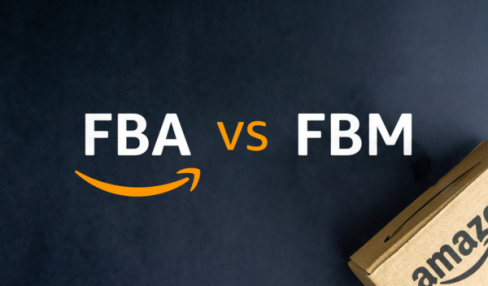The Future Of Online Shopping: How Embedded Payments Are Changing The Game
5 Mins Read
Published on: 21 February 2024
Last Updated on: 08 November 2024

In the ever-evolving landscape of online shopping, a new revolution is quietly taking place, transforming how consumers and businesses interact with financial transactions. This revolution is powered by the rise of embedded payments, an innovation that seamlessly integrates payment processing into software applications without redirecting users to external platforms. Understanding what are embedded payments is key to appreciating their impact on the online shopping experience and their role in shaping the future of digital commerce.
The Seamless Shopping Experience

Embedded payments have substantially changed how online shoppers check out, creating a smoother process. In the past, completing a purchase often required leaving a retailer’s site to enter payment details on a separate third-party page, interrupting the shopping experience. Not only did this disruption break up the normal flow of selecting items and checking out, it also increased the likelihood that someone would abandon their cart before finishing their order. Now, embedded payments have streamlined this checkout journey.
By directly integrating payment options into retailers’ platforms instead of redirecting elsewhere, shoppers can enter their information without leaving the original site. This seamless experience maintains the consistent environment from browsing to purchase, allowing people to finish what they started without interruption quickly. As a result, embedded payments have enhanced the online shopping flow, making checkouts faster, simpler, and less prone to abandonment.
This seamless integration aims to keep the customer focused on their shopping experience from beginning to end. It works to blend browsing products, selecting items, and making payments into a cohesive process. This benefits both customers and businesses. For customers, it provides a smoother, more intuitive shopping experience where different steps flow together naturally. They can easily move from looking at options to checkout without interruption.
Merchants see the rewards as well through increased sales and happier patrons. When checkout is only a click away, more people complete their purchases. As more retailers adopt this technology, consumers will expect this degree of integration as an essential part of online shopping. The connection between selecting items and paying makes the entire interaction more streamlined and connected.
Personalization And Customer Insights

By embedding payment systems directly into online platforms, businesses gain novel opportunities to customize shopping experiences for each customer. Integrating transaction functionality allows companies to collect insightful information on what people prefer and how they spend. With this data, recommendations, deals, and incentives can be personalized for every user based on their interests and past purchases.
A tailored approach strengthens relationships by making people feel known and catered to. It also encourages repeat visits and increased spending through more relevant suggestions. While streamlining the process of buying, embedded payments open new potential for personalized outreach that improves satisfaction and fosters allegiance.
Furthermore, this integration allows for real-time feedback and metrics, giving businesses instant perspective into the effectiveness of their products and tactics. Having the capability to observe and examine purchasing and payment information concurrently offers a complete picture of consumer habits, permitting more informed conclusion-drawing and strategic preparation.
Enhanced Security And Trust

While security worries have long posed a substantial hurdle in the acceptance of online shopping, embedded repayments aim to tackle these issues by furnishing safeguarded, encoded dealings straight inside the shopping platform. By doing away with the necessity to navigate external websites, embedded payments decrease the hazards of phishing scams along with other protection dangers, thereby improving consumer assurance.
Moreover, these technologies regularly comprise sophisticated safety steps, for example, biometric validation and dual-factor verification, contributing an extra tier of protection for customers. The heightened security and minimized chance of fraud render shoppers more at ease with digital dealings, promoting more frequent and higher-worth buys. While these systems add protection, some concerns remain regarding privacy and potential vulnerabilities.
Conclusion
Embedded payments are increasingly changing how people shop online, moving transactions towards a more seamless, customized, and protected process. With this technology developing further and becoming more prevalent, it will establish fresh expectations for simplicity and productivity in online buying. Embedded payments integrate financial details directly into digital storefronts, allowing for speedy checkout from anywhere on a site. This embedded nature streamlines the purchase workflow for shoppers by reducing separate steps and pages. It also enables merchants to personalize the experience based on individual customers. For example, loyalty programs or recommended products can be displayed alongside payment fields.
Additionally, keeping payment information securely embedded within a retailer’s systems enhances the protection of sensitive financial details compared to external forms. As this technology continues advancing and more brands adopt embedded payments, it will redefine convenience in online shopping through a smoother, more tailored, and safer process.
Businesses implementing embedded payment options within their platforms will provide customers a more seamless shopping experience compared to traditional checkout pages. Not only will this convenience customers, but it will also provide merchants unique perspectives into purchasing tendencies and interests. This transition signifies more than a passing trend – it represents a pivotal transformation in how digital transactions are carried out.
Looking ahead, embedded payments will serve as an essential piece of the online buying process, continually spurring novel approaches and reimagining engagement with internet shopping. The incorporation of payment details directly where products are displayed streamlines the process while simultaneously offering valuable buyer insights that can optimize marketing strategies.
Read Also:



















Comments Are Closed For This Article